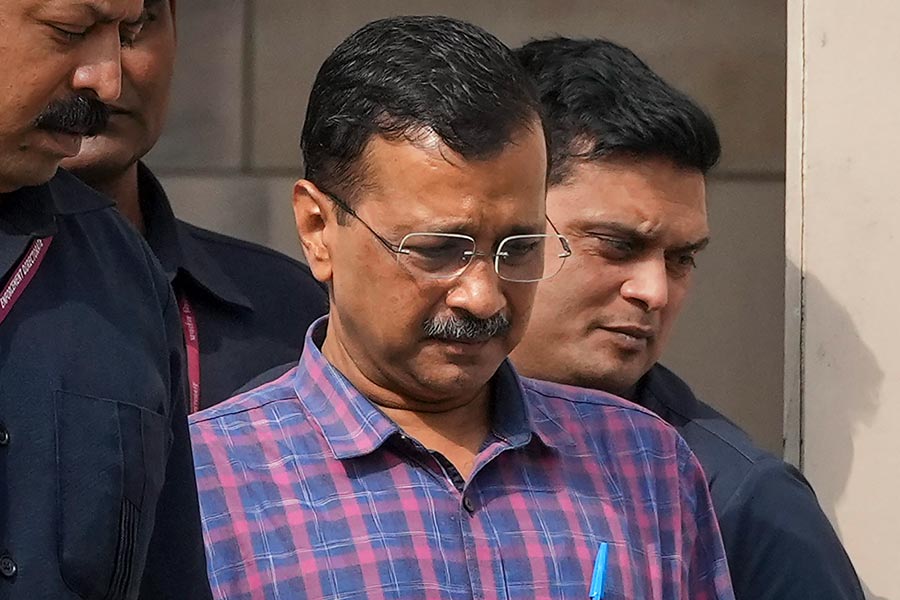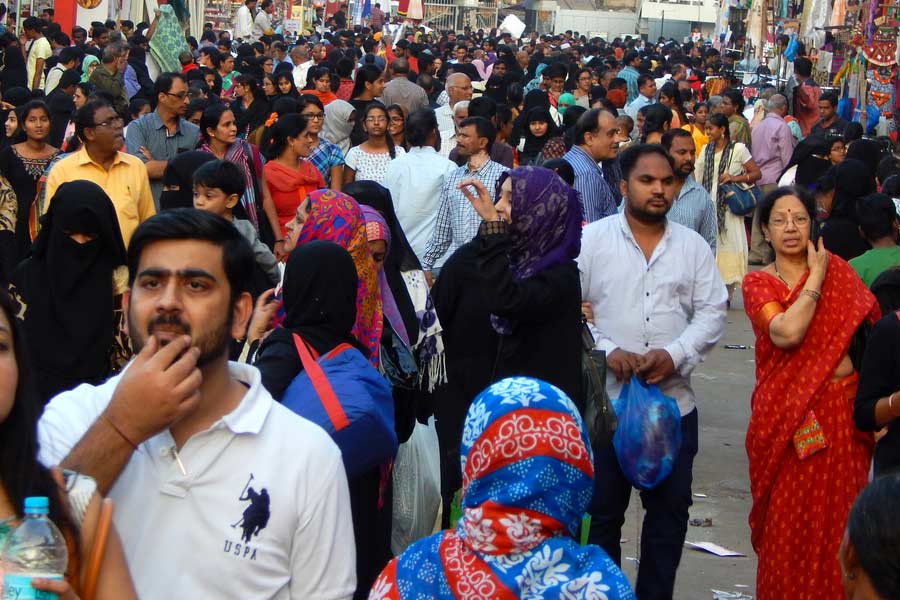
The phenomenon of globalization encompasses at least three distinct economic processes. The first of these is an enormous increase in the weight of the financial sector, so much so that many have talked of the current period as one of 'financialization', analogous to the 'industrialization' that had occurred earlier. The increase in the weight of the financial sector is ubiquitous, though obviously far more pronounced in the advanced countries, from where industrial and certain service sector activities have even been shifting out to third world economies like China and India.
The second process under globalization is in fact this very shift in the location of a whole range of activities from high-wage advanced countries to low-wage third world countries, for meeting not local but global demand. Such a shift in response to wage differences is precisely what had not occurred historically, for then we would not have had the sharp dichotomy that exists today between the developed and the underdeveloped countries. Central to this dichotomy is a difference in the average living standards of the people, an expression of which is the wage difference. If labour had been legally allowed to move freely from the underdeveloped to the developed world, or if capital, which was legally allowed to move freely from the developed to the underdeveloped world, had actually done so, then these wage differences would have disappeared.
But this did not happen. Capital from the advanced countries moved to the colonized or semi-colonized economies only in sectors like plantations and mining, which produced primary commodities, or sectors like trade and finance which were required for servicing this international division of labour, but not in core manufacturing activities during the entire colonial period (barring some value addition to primary products, like jute). The current globalization has meant a break with this pattern, with international capital now locating manufacturing activities in China, and 'outsourcing' several service sector activities to India. The activities spontaneously diffused in this manner still constitute mainly 'lower order activities' in terms of technological intensity; but this diffusion nonetheless is a significant fact.
The third process under current globalization is a large-scale assault by capital on traditional petty production including peasant agriculture. This takes the form of outright dispossession of such producers (buying their assets at throwaway prices, usually with the connivance of the State), or a squeeze on their incomes, which is merely a slower process of dispossession. If outsourcing of activities from the metropolis to the third world marks a break with the colonial pattern, the dispossession of petty producers (what Marx would have called a process of "primitive accumulation of capital") is a continuation of the colonial pattern. It had been interrupted under post-colonial dirigisme because newly independent third world States had sought to protect, promote and defend petty production against the onslaught of capital (though allowing an internal differentiation among such producers); but with the neo-liberal agenda being adopted under the regime of globalization, such protection by the State is withdrawn, a direct consequence of which is the agrarian crisis and the mass peasant suicides we see in India today. The crisis is not confined only to the agrarian economy; it afflicts the entire range of traditional petty producers, from fishermen to craftsmen to textile weavers.
These features of globalization have a profound impact on the conditions of the various classes and hence on the overall class configuration within economies. The most significant gainer from the regime of globalization is of course the corporate-financial oligarchy within each country which is integrated into global capital flows. These oligarchies constitute the proverbial 'one per cent' which have been the target of 'Occupy' and other such movements. The recent concern over growing inequality in wealth and income within most countries of the world, of which the reception accorded to Thomas Piketty's book, Capital in the Twenty-First Century, is an indicator, has to do with the immense enrichment of these oligarchies in the period of globalization.
At the other end, there has been an absolute worsening in the conditions of vast masses of the 'working people', among whom I count the workers, both employed and unemployed (including those suffering from 'disguised unemployment'), the peasants, the agricultural labourers, and the traditional petty producers. For the workers in the advanced countries, this is both clearly established and also expected, since the shifting out of certain manufacturing and service sector activities to third world countries because of their low wages necessarily puts a downward drag on these workers' wages, by generating unemployment among them. In fact, Joseph Stiglitz has suggested that the real wages of an average male American worker in 2011 were marginally lower than in 1968.
The more intriguing case is of the working people of the third world: why should their conditions worsen under a regime of globalization? The simple reason is that the squeeze on traditional petty producers because of the withdrawal of State support (in the form of cuts in subsidies on their inputs, and of denial of assured prices such as what the commodity boards had provided in India in the pre-liberalization days), force many of them to abandon their occupations and seek employment outside. But the removal of restrictions on technological-cum-structural change in the economy (of which allowing foreign direct investment into multi-brand retail is a recent example) raises the rate of labour productivity growth, constricting the rate of growth of employment, which falls short of the rate of growth of those seeking employment owing to both the natural increase in workforce and the displacement of traditional petty producers. This increases the size of the labour reserves relative to the workforce (though unemployment does not necessarily manifest itself in an open form), which not only is a cause of impoverishment per se but also pulls down the real wages of even organized workers. The privatization of essential services like education and health, the costs of which increase as a consequence, adds to this process of impoverishment. The increase in hunger in India over the period of neo-liberal policies testifies to this. (Evidence of this based on Utsa Patnaik's research is provided in my article, "Road map to a failed state", Frontline, June 24).
Between these two groups, however, there is a 'middle class' (I use the term only in a descriptive sense) which has done well for itself in the period of globalization and become its votary. In advanced countries, those engaged in the financial sector constitute its core, while in third world countries, apart from this segment, those engaged in sectors to which activities are being outsourced from the metropolis, belong to its 'core'. The demand for a range of goods and services (especially services) which arises because of the higher incomes of this 'core' typically generates further middle-class employment (as a 'multiplier' effect), so that a relatively affluent middle class develops under globalization, and constitutes a major source of social support for it, not just by itself but also by generating expectations among those below that their progeny may move up to its ranks some day.
Whether the proportion of this 'middle class' in the total workforce has increased during globalization remains unclear. But since almost half of India's workforce is still engaged in agriculture, and since the service sector's growing weight in output is not matched by any similar growth in its weight in employment (and, besides, it is a heterogeneous sector which is also a repository of labour reserves), there is unlikely to have been much of an increase in the proportion of the middle class in the workforce. Its greater visibility is because it has detached itself from the rest of the workforce in terms of its relative income.
The period of globalization in other words is marked by an intensified contradiction between the working people on the one side and the middle-class beneficiaries of globalization on the other. This is a phenomenon visible everywhere. In the United Kingdom, the working people voted for Brexit while London, where the affluent 'middle class' is concentrated around the City, voted otherwise. In India, land acquisition from the peasantry, using varying degrees of coercion, for a 'development' the main drivers and beneficiaries of which are the middle class, exemplifies this contradiction. In West Bengal itself, the Left Front's 'industrialization' drive, perceived as an attempt to woo the middle class, entailed land acquisition that alienated the peasantry.
The current crisis of world capitalism, the end of which is nowhere in sight, is likely to cause middle-class disenchantment with globalization, and hence make possible a coming together of these two social groups. But, for the Left to lose sight of the existing contradiction between them, and be insensitive to the conditions of the working people in the quest for middle-class support, will be suicidal.
The author is Professor Emeritus, Centre for Economic Studies, Jawaharlal Nehru University, New Delhi










